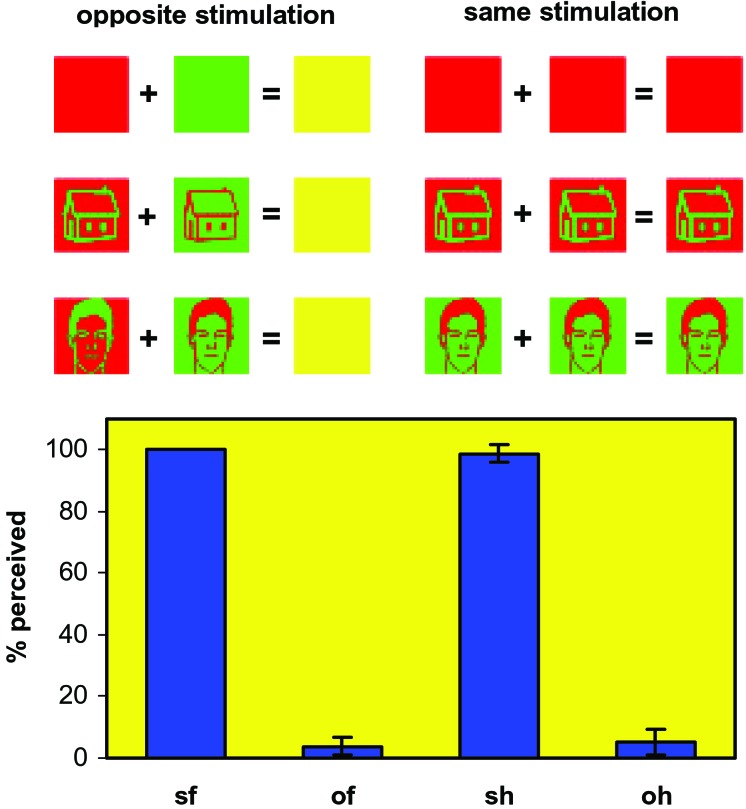Figure 1.
A schematic presentation of the stimulation method used in this study and the averaged performance of the seven subjects in the face/house/nothing discrimination task. Dichoptic stimuli of opposite color contrast between the two eyes were invisible (opposite stimulation), whereas identical stimuli of the same color contrast were perceived the vast majority of the times (same stimulation). Pictures of houses, faces, and uniformly colored controls were used. The input to the two eyes and the expected perceptual output (Upper) and subjects' true psychophysical performance of the subjects (Lower) are shown. Continuous fusion of the stimuli was achieved by using repetitive brief presentations (see Methods). sf, same faces; of, opposite faces; sh, same houses; oh, opposite houses. The averaged percentage of the number of stimuli perceived is shown (of a total of 448 per subject per stimulus category) together with the standard error between the subjects. Control stimuli were never perceived either as a face or a house. The few trials in which subjects had perceived an opposite stimulus were modeled separately in the design matrix (see Methods) and thus did not influence the pattern of brain activation.

